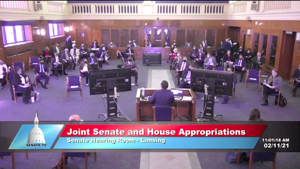Michigan Gov. Whitmer pitches $67 billion budget prioritizing education, childcare

(The Center Square) – Gov. Gretchen Whitmer’s $67 billion state budget is aiming to recover the state from the COVID-19 pandemic by boosting education, infrastructure and public health spending.
She’s proposing spending $570 million to address learning loss and K-12 enrollment declines on top of a $162-per-student, or 2% increase in base aid for most traditional districts in the fiscal year that starts in October.
That’s a $5 billion increase from 2020’s budget.
“The budget plan I released today along with the MI COVID Recovery plan I announced last month makes the investments we need to jumpstart our economy and build a better Michigan for everyone,” Whitmer said in a statement. “I am committed to working across the aisle with the legislature to ensure that we don’t waste a dime of the federal aid we have received thus far, so we can help Michigan families and small businesses get back on their feet.”
The budget includes a general fund total of $11.4 billion and a school aid fund total of $14.7 billion.
Other highlights of the budget plan include:
Children and Public Education
$203 million to increase base per-pupil funding to $8,275 for districts at the minimum ($164 per-pupil increase) and $8,611 for districts at the maximum ($82 per-pupil increase), reducing the gap disparity to $336 per pupil.$250 million in one-time supplemental funding to support student recovery$200 million in one-time spending for declining enrollment to stabilize budgets for districts experiencing losses$120 million total for students to attend summer school, after school learning, day camps
Economic Opportunity
$370 million for expanding childcare options by temporarily increasing the income eligibility threshold from 150% to 200% and temporarily waiving out-of-pocket copays through fiscal 2022, with a 10 percent increase in hourly child care provider rates$120 million one-time for the Reconnect program to provide a tuition-free pathway to an in-demand industry certificate or associate degree for those eligible.$60 million one-time for the Futures for Frontliners program$360 million to permanently increases direct care wage by a $2/hour$38 million for a one-time nursing home COVID-19 supplemental payment to address lost revenue$91 million to improve access to behavioral health for Medicaid enrollees
Infrastructure
$300 million to repair 120 local bridges$290 million in infrastructure grants to address sewer overflows$40 million to fund high water level and resilient infrastructure for projects including coastal erosion, flooding, transportation networks, urban heat, and stormwater management.
Clean Energy and the Environment
$20 million for contaminated site cleanup$5 million for the State Facility Green Revolving Fund, a catalyst for energy efficiency and renewable energy projects at state facilities$5 million for the Michigan Saves Green Bank to leverage private investment in clean energy improvements
Other spending
$70 million on income tax losses with payments below $25 million to any single city.$20 million for criminal record expungement via the Clean Slate law$70 million to universities and colleges that adopt COVID-19 testing, quarantining, and contact-tracing policies
Senate Minority Leader Jim Ananich, D-Flint, said he was pleased the budget focused on young Michiganders.
“Historic investment in schools, increased options for child care and funding for the Filter First program to make sure kids and staff have safe water to drink at school are all major priorities that we intend to see across the finish line,” Ananich said in a statement.
Senate Appropriations Committee Chairman Jim Stamas, R-Midland, said helping families, businesses, and students recover and get COVID-19 vaccines is their biggest priority.
“I support closing the gap in school funding, investing in our local infrastructure and depositing additional resources into the budget stabilization fund, but the devil is in the details on how to make it work,” Stamas said in a statement. “I am very concerned about the significant growth in spending and how we will pay for it in the long term when we run out of the one-time federal funding.”
Disclaimer: This content is distributed by The Center Square
